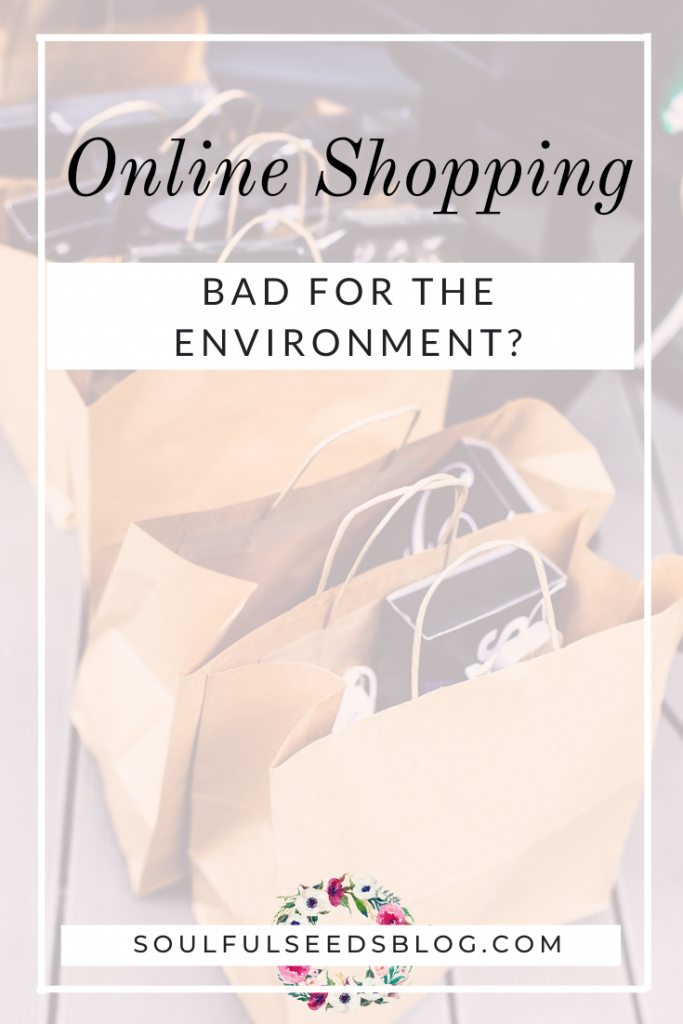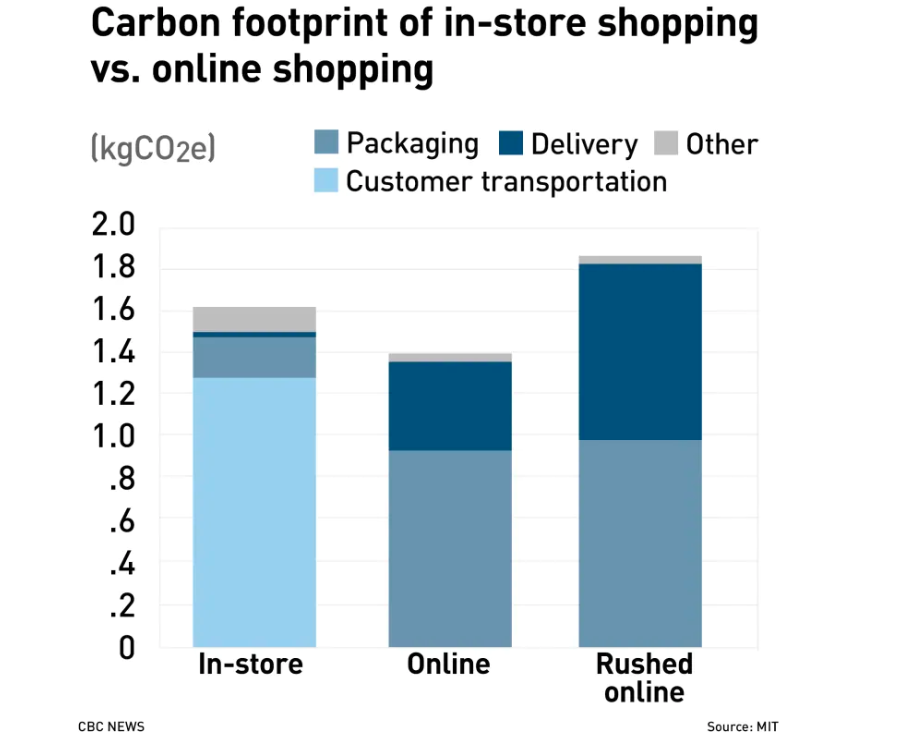I recently received a question from an awesome reader regarding the environmental friendliness of online shopping. Her question more specifically pertained to online thrifting, which y’all know I can’t get enough of (hehe).
The question asked:
do the environmental benefits that come with purchasing used clothes get cancelled out by the carbon emissions that come with shipping these clothes to the purchaser?
Her question really sparked my curiosity on the subject and got me thinking more about the impact my online thrifting has on my carbon footprint.

Obviously, the most eco-friendly way of getting new clothes would be to walk to a local thrift store, reusable bag in hand (check this one out– it’s super cute and made from recycled plastic bags! ONLY 2 LEFT!
Walking to a thrift store is not a super viable option though (if it is for you, you’re a lucky one!). Because of this, we resort to driving to thrift stores, or thrifting online (some of my favorites are Relovv, Poshmark, ThredUp, and Depop).
Online Shopping vs. Retail Shopping
Here’s the link to the primary study I’ll be referencing. The study is done by Dmitri Weideli, a Graduate student at MIT. In this study, he analyzes the supply chains of both traditional retail stores and online stores in order to see the difference in carbon emissions between the different forms of shopping.
Weideli analyzes three different products, representative of larger product groups, in order to have a holistic way of looking at shipping impacts. The one most relevant to the question at hand is his analysis of the purchase of a T-shirt.

Weideli even charts the differences in emissions based on the different kinds of consumers, calling a consumer who searches, purchases, and returns an item all online a “cybernaut”. His analysis of a cybernaut’s purchase of a T-shirt reveals that “the Cybernaut’s carbon footprint is almost two times smaller than a Traditional Shopper”.

He attributes this vast difference to a couple different factors, namely the hightened control of shipping that is seen in online retail and the strategic methodology of online order fulfillment.
The predominant source of emissions in traditional retail shopping is the customer’s trip to the store, while the primary source of emissions in online shopping comes from packaging.
Related -> Eco-Friendly Stocking Stuffers
Caveats?
The findings from the study honestly surprised me. I certainly didn’t expect to learn that online shopping contributed to less emissions overall in comparison to in-store shopping. This study’s findings were also affirmed by a University of Washington study done in 2012 by professor Anne Goodchild, who found that grocery delivery cuts emissions by 80-90% in comparison to physically going to the grocery store to get groceries.
Though this is the major takeaway from the above mentioned thorough studies, there are still a few variables that will contribute to different results.
This article by the Sierra Club references the multiple factors that could result in online shopping being more emissions intensive in comparison to retail shopping: the type of car used to drive to a retail store, the delivery method selected, and the packaging of the product.
What Can You Do to Reduce Your Shopping Footprint?
Online thrifting is a gift. I’m not going to stop doing it, and would never expect anyone else to. There are purchasing patterns you can implement, though, to reduce the impact of your purchase on the earth.
Here’s a list of what you can do while online shopping to reduce your carbon footprint.
Bundle Your Packages
If you are thrifting from one of the various thrift websites/apps, you have the opportunity to bundle items from the same closet together. This usually gives you a discount, and makes shipping a whole lot easier for the seller.
Choose Regular Shipping
Although that Two-Day Amazon Prime shipping seems so convenient, it comes at a high cost. If you are purchasing multiple things through Amazon under the Two-Day shipping method, you’ll notice they usually arrive separately.
This is due to the fact that sometimes the products are not in stock and due to the immediacy of the order, they have to be sent out directly after being identified. When items that should be packaged and delivered together are not, it results in increased (unnecessary) packaging and shipping.
In an interview with CNN Business, Patrick Browne, the director of global sustainability at UPS said,
The time in transit has a direct relationship to the environmental impact.. I don’t think the average consumer understands the environmental impact of having something tomorrow vs. two days from now. The more time you give me, the more efficient I can be.
Purchase Carbon Offsets
If you are really concerned about the emissions made as a result of your online shopping, you can always purchase carbon offsets.
Support "Green Packaging"
UPS has an Eco Responsible Packaging Program, which certifies companies who have demonstrated efforts to reduce their environmental footprint through designing and implementing less resource-intensive packaging methods.
USPS has a sustainable packaging program, and claims that all their packaging meets either the Sustainable Forest Initiative or Forest Stewardship Council standards.
Resources
I hope you found this article helpful! As always, if you have any questions/comments/concerns, email me at soulfulseedsblog@gmail.com or comment down below!

